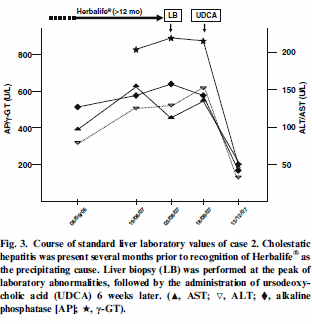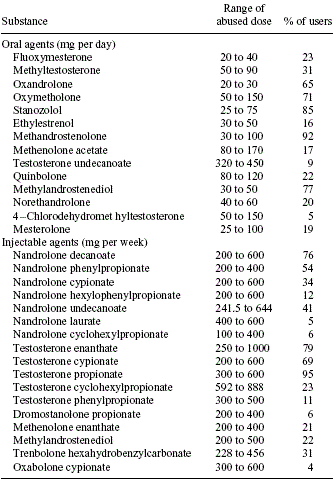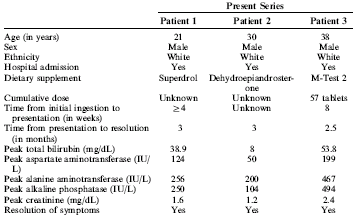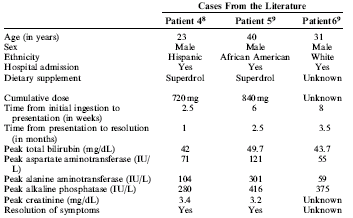Beware of These Ingredients in the Shakes
Fructose: The second ingredient in this product is fructose which means that the shake is mostly sugar. Fructose is worse than sucrose (table sugar) because it does not make you feel full like table sugar so you end up consuming more, and it causes increased risk of weight gain and bad cholesterol.
Ferrous fumarate: This is iron and should not be taken by men or post-menopausal women as it can result in above normal levels and have a toxic effect.
Vegetable oil preparation: Sunflower oil tends to be highly processed which can caused it to go rancid easily unless special care is taken in the processing and it is kept in the dark and refrigerated. It is also high in omega-6 fatty acids which most people get far too much of.
Sucralose (Splenda) and Acesufame-k: I wrote an entire book on the dangers of artificial sweeteners called Sweet Deception. The biggest scam with artificial sweeteners is that they actually cause you to be hungrier and cause weight gain instead of weight loss. Splenda has been shown to have harmful effects in lab animals and in humans from spontaneous abortions, rashes, pain, to digestive disturbances. Avoid at all costs. Ace-k is a cousin of Aspartame (Nutrasweet), a notorious neurotoxin.
On the other hand, many of the other Herbalife products we looked at did not contain any ingredients that appeared to be harmful although we cannot comment on their efficacy.
Health Evangelist Dies of Alcohol Abuse
Unfortunately in 2000, Mark Hughes died at the tender age of 44. Herbalife reported Hughes had an “accidental death from mixing anti-depressants with an alcohol overdose.”But the autopsy report showed that Hughes died after a 4-day drinking binge combined with an anti-depressant and possible a narcotic overdose. In addition to alcohol abuse, Hughes smoked 6-8 cigars a day.
My Comments on the Company History:
My intention in including this history is not to gossip. But I do have concerns about the mistruths that have been told about Herbalife’s history, research, testing, and credentials. If someone owns a health company, s/he better be a health expert or have a team of health experts from the beginning. S/he also needs to walk his talk and set an example of being healthy which includes living a healthy lifestyle and being addiction free.As far as Herbalife’s trouble for making health claims, it seems Herbalife in the early years was out of line with many of their claims (curing cancer and dissolving tumors are big FDA no-nos). However, I also think it’s a crime that the FDA has a gag order in effect and that no supplements are allowed to make health claims—only pharmaceutical drugs can make health claims. In my opinion, any natural product should be able to make a claim as long as there is double blind research that can prove the claim and if the company offers a money back guarantee to mitigate consumer risk.
About the Herbalife Diet Program
The diet program involves asking you to drink two protein drinks and to eat only one actual meal per day. The shakes are only 180 calories and a typical meal is 400-600 calories so we feel that the program is too low in calories to be considered healthy. The World Health Organization considers any caloric intake below 2,200 calories to be starvation. Low calorie diets usually result in rebound and binge eating as your body tries to compensate for the starvation. Low calorie diets will also slow down your metabolism—the rate at which you burn calories and fat.There is quite a strong emphasis on exercise within some of the written materials. The exercise emphasis has increased since the arrival of CEO Michael O. Johnson in 2003. He came from a 17-year career at Disney, and is a triathlete.
Its company spreadsheet reports nearly zero dollars in research and development, meaning that there is little done to affirm that the items in the supplements actually do what they’re supposed to do. Almost all of its manufacturing is outsourced, including to a factory in China. Its advisory board consists of paid physicians and no nutritionists (allopathic physicians receive very little nutrition training in medical school, as they are too busy memorizing drugs).
The dietary recommendations are to eat one balanced meal per day with lots of phytonutrient-rich vegetables and fruits. You can also customize your protein intake to suit your individual needs. The rest of your meals are protein drinks. Dieters must take “activator” capsules and a multivitamin with each meal.
Praise For The Herbalife Weight Loss Program
There are hundreds of thousands of zealous distributors who rave about Herbalife products and who can attest to how Herbalife has helped them lose weight or get healthier. Furthermore, Herbalife provides a potentially lucrative business opportunity to those who want a home based business in the trillion dollar health industry. As with any MLM, only a small fraction of the distributors develop the know-how and diligence to become successful. For the pros and cons of being a distributor click here http://answers.google.com/answers/threadview?id=302284Criticism of the Herbalife Weight Loss Program
This diet does nothing to mimic what real life is like and relies heavily on the use of supplements and protein powders at a cost of up to five dollars a day. Once you achieve your ideal weight, Herbalife recommends maintenance, which consists of one shake a day. This just isn’t realistic, and you will likely gain the weight right back again as soon as you stop the diet.
The diet is very expensive and is much too low in fat and carbohydrates unless you load up on the fat and carbs during your one meal per day. Two scoops (or 25 grams) of the protein shake contain only 1 gram of fat and 13 grams of carbohydrates. If you need to snack, the program will be happy to sell you their own version of a protein bar, which is also very expensive.
Other Herbalife Supplements
The other part of the program includes supplements such as Total Control which contains green tea and cacao, both of which “stimulate your metabolism” basically through a high caffeine intake. You can get the same thing out of a cup of tea or coffee for a lot less. Total Control costs $27 for 90 capsules.The Cell Activator supplement claims to contain antioxidants and lists ingredients including inositol, chorella, Shitake mushrooms, L-glutamine, Cayenne pepper, Dried Rhodiola root, dried Reishi mushroom extract, and dried pine bark extract. It also contains many of the acids found in the Krebs cycle—an energy cycle found in every cell. Inositol is a B vitamin, while Chorella is a blue-green algae. It is supposed to “support” your cells as you lose weight. Cell Activator costs around $34 for 90 capsules.
While many of these ingredients are high in antioxidants and may be helpful from an overall health perspective, antioxidants have not been shown to have a strong impact on weight loss. If you are going to spend money on a supplement, we suggest investing in an antioxidant-rich multi-vitamin, as vitamin and mineral deficiencies can lead to food cravings and overeating.
There are also other supplements you can add to the regimen, including Cell-U-Loss, which is supposed to reduce the appearance of dimpled skin and help with water weight gain. Cell-U-Loss contains couch grass, hydrangea, short bushu extract, dried corn silk and dried uva ursi extracts. The company does not guarantee that the products have been manufactured without animal testing.
Conclusion Herbalife is one of the most successful multi-level marketing companies of all time. Its weight loss program does not emphasize natural lifestyle changes but sells protein shakes and supplements as a solution for weight loss. There are ingredients in the protein shakes that are unhealthy and should be avoided. Does the program work? Millions of distributors and customers claim it does. There is something to be said for this. Unfortunately, when people go off the Herbalife program, it seems inevitable that weight gain will follow when they resume their old ways of eating.
Herbalife Diet While Pregnant
Nov 8, 2011 | By Theresa Rosenthal
During pregnancy, the average woman should consume about 2,500 calories a day instead of the approximately 2,100 calories necessary before pregnancy. Consumption of any health or supplement product during pregnancy should contribute to these caloric needs, rather than restrict them. Diet shakes in general may safely be consumed during pregnancy when taken as a snack and not a meal-replacement. Herbalife products have some health and financial concerns that should be taken into consideration, especially during your pregnancy. Please consult with your physician about what supplements are appropriate for your pregnancy diet.
Dieting While Pregnant
Herbalife produces many different products for various needs, though many people use the protein shakes for weight management or fitness goals. The most important thing to remember during your pregnancy is that dieting is not recommended. Extra calories are needed each day for your body and your developing baby. Restricting these calories could cause problems for you and your baby’s growth due to malnutrition. Diet products, such as Herbalife weight management supplements and protein shakes, are not prohibited during pregnancy unless you’re using them to diet, or relying on them every day for your nutritional needs. Please consult your physician before adding supplements to your pregnancy diet.
Herbalife While Pregnant
Herbalife offers an entire line of products to support weight management, digestive health, personal care, energy, fitness, immune system and heart health. Each product solution offers a variety of herbal formulas, beverages, shampoos and skin care. While you may opt for the protein shakes under the fitness category or a nutritional shake from the weight management product line, make sure you are using them only in addition to healthy meals, not as a replacement. Since there are several Herbalife products, each one should be considered separately for their respective ingredients. Remember to consult your physician before making supplemental changes to your pregnancy diet.
Why is Herbalife Not Recommended for Children?
Herbalife
is an adult diet that combines low-calorie shakes with herbs and other
supplements to help you lose weight. You consume two shakes a day and
then eat one meal, typically dinner, and take supplements designed to
speed up metabolism, reduce hunger and provide nutrients. The Herbalife
adult diet is not recommended for children.
The Herbalife company was founded in February 1980 and has been considered a popular diet option for adults.
Safety
According to the company website, Herbalife tests its products with clinical studies at major universities to determine safety and effectiveness. The company also established its own Nutritional Advisory Board to train salespeople.
Children
The Herbalife diet program is not recommended for children due to its restrictive caloric intake and lack of well-rounded nutritional offerings.
Supplements
Children should never take supplements, herbal or otherwise, that are meant for adults only. Consult a doctor with any questions.
Herbalife Kids
Herbalife makes Kids shakes that claim to offer protein, fiber and important nutrients for children. Only use these shakes to compliment a normal, healthy diet and never as a replacement for meals.
Risks of Herbalife
By Therese Pope, eHow Contributor Herbalife is a natural diet pill supplement. Herbalife sells supplements and shakes that increase energy and raises metabolism. It has been associated with controversy over the years because it used to contain the drug ephedra. Ephedra was taken off the market by the FDA because it was associated with causing heart problems. The following health risks are associated with Herbalife products.
-
Anxiety and Restlessness
-
Herbalife supplements contain caffeine. Caffeine helps increase metabolism (which helps with weight loss), but caffeine can also cause anxiety and restlessness.
Increased Blood Pressure
-
Because Herbalife contains caffeine, it can increase blood pressure. When blood pressure (hypertension) increases over an extended period of time, cardiovascular problems such as heart disease and stroke can occur.
Counteraction with Prescription Medication
-
Because Herbalife contains a wide variety of herbs, it can counteract with prescription medication. People with medical issues who take prescribed medication should consult with their doctor before taking Herbalife.
Headaches
-
Herbalife's herbal formula helps boost metabolism to lose weight. However, the caffeine (yerba mate extract) can cause headaches.
Warning
-
Herbalife is not a herbal supplement approved by the Federal Drug Administration (FDA). Herbalife has also been accused of using too much lead in their products, and has recently been involved in a court case because their supplements exceed the normal lead limit. More information about the risks of Herbalife are available at the Resources below. Risks of Herbalife
-




























